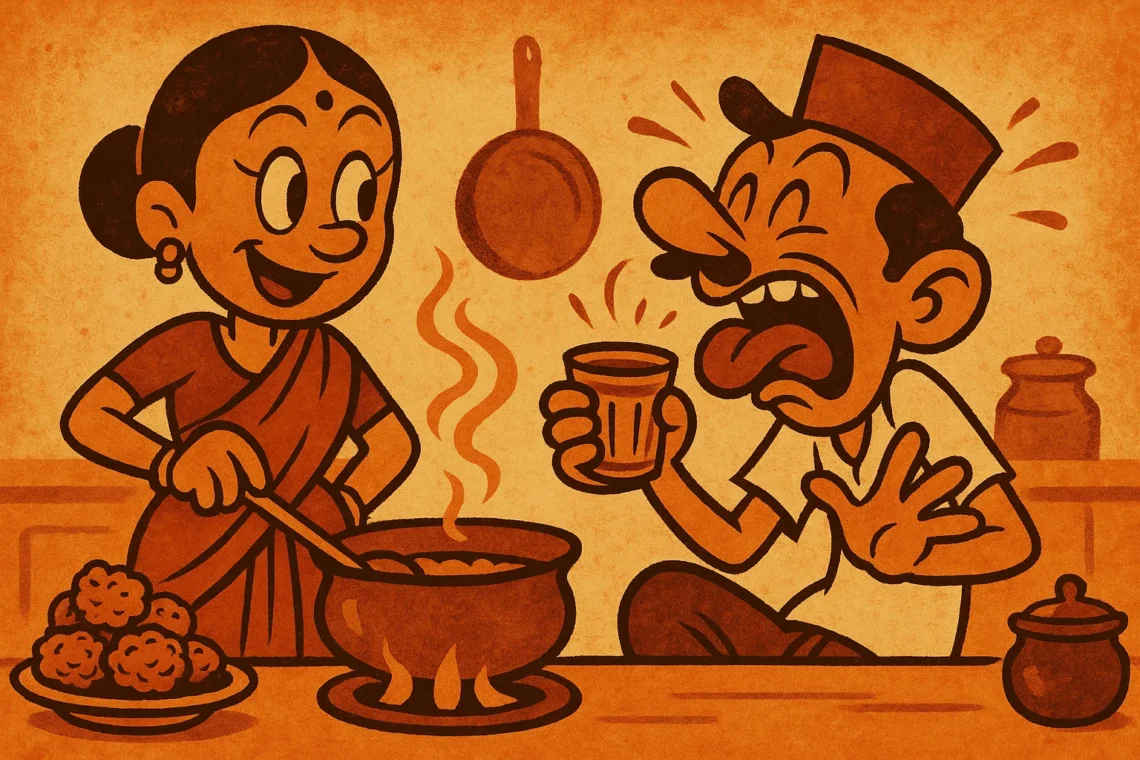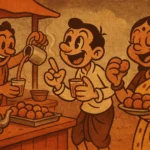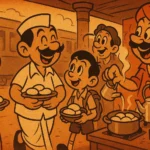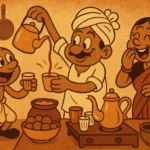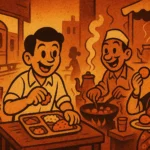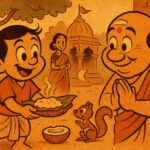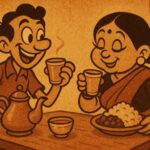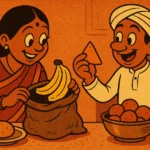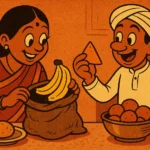It’s always the first sip that gets you. You’d think after a lifetime of drinking chai—morning chai, train chai, roadside kulhad chai—I’d have learned patience. But no. That morning, somewhere between being late for college and trying to impress someone by pretending I wasn’t a sleepy mess, I burnt my tongue on a cup of chai so hot it could have stripped paint.
The chai came from the little stall outside Churchgate station. Not the big, flashy one with branded signage, but the scruffy tapri with the dented kettle, the blackened stove, and a chaiwala who poured like a poet—arm lifted, stream unbroken, eyes half-closed. He didn’t do conversation. He did chai. That day, I didn’t wait. The cup was handed over, steam still ghosting the air, and I took a bold, foolish sip. Boom. Burnt tongue. The kind that makes everything taste like regret for two days straight.
The Heat You Ask For
There’s something deeply Indian about wanting your chai to be hot enough to melt steel but not having the patience to wait for it to cool. We crave the intensity. The scalding liquid, the clink of the glass cup, the dramatic huffing as you try to slurp-cool it midair. We call it “kadak” like it’s a badge of honor. The hotter the chai, the more sincere the emotion. Dil se garam, like most of our feelings.
Chai is not just a beverage. It’s a setting. A background score. A buffer. It’s what you offer when the conversation gets awkward or when it’s too quiet or too loud. In our family, it was the solution to everything from stomach aches to emotional meltdowns. “Thoda chai pee lo,” was the answer to questions no one even asked.
The Burn as Baptism
Looking back, burning my tongue on that chai wasn’t a mistake—it was a rite of passage. You don’t truly belong in this complicated, chaotic, deeply caffeinated country until you’ve scorched your mouth on overzealous adrak. It’s like a hazing ritual, except instead of being dunked in cold water, you get singed by scalding liquid love.
And oh, the after-effects. Everything you eat for the next 24 hours tastes like cardboard. Your tongue feels like sandpaper. But that doesn’t stop you. That very evening, you’re back at the stall, nodding at the chaiwala, reaching for another cup, this time blowing gently. Learning. Evolving. But still reckless at heart.
Chai and the Art of Public Emotion
Burning your tongue in public has its own theater. You can’t scream. You can’t spit. You just do that awkward breathing thing where you pretend nothing’s wrong while blinking very fast. Bonus embarrassment if someone asks, “Zyada garam tha kya?” and you respond with a warbly “nahi nahi,” even as your mouth throbs.
But secretly, you’re proud. Because that burn? That means you had chai the way it’s meant to be had. No shortcuts. No lukewarm nonsense. You went in, mouth first, heart open.
Chai in a New City
Now in Austin, chai comes with disclaimers. “Caution: Hot Beverage” printed in 14-point font on every paper cup. Baristas ask if I want it “mildly spiced” or “not too hot.” I nod politely, but inside I’m screaming. Because what is the point of chai that doesn’t scald your fingers through the glass? What’s the point of chai without risk?
At home, I try to recreate the old-school tapri flavor. Boiling the tea till it threatens to escape the saucepan. A thumb of ginger, not a pinch. A loud, bubbling boil. And always, that dangerous first sip—now taken with a little more care, but still with reverence. Because the burn might have faded, but the lesson stuck.
The Flavor of Foolishness and Familiarity
Everyone has their own chai story. A heartbreak healed on a rainy evening with a second cup. A friendship cemented over roadside kulhads. A family argument paused by the phrase, “Pehle chai peete hain.” But the one that lingers most vividly is that burnt tongue. That too-hot first sip. That moment where taste met temperature and ego.
And I’d do it all over again. Because chai, like most of our best memories, is a little bit sweet, a little bit strong, and just risky enough to leave a mark.
Born in Mumbai, now stir-frying feelings in Texas. Writes about food, memory, and the messy magic in between — mostly to stay hungry, sometimes just to stay sane.

